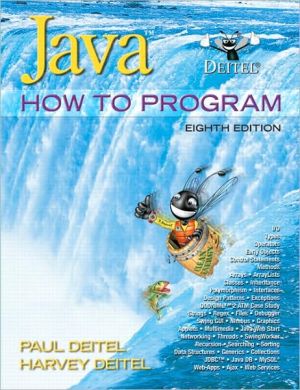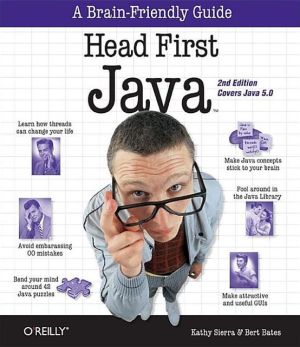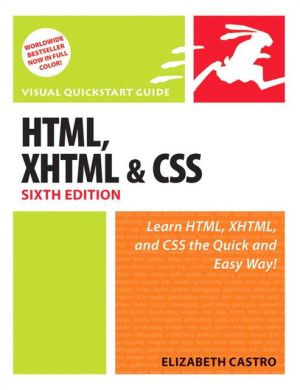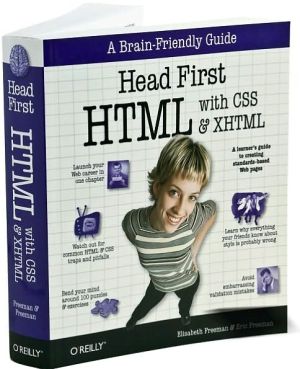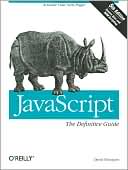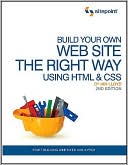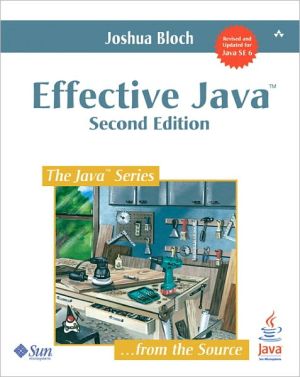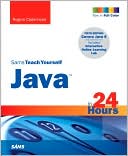Java How to Program: Early Objects Version [With CDROM]
"The [arrays] exercises are quite sophisticated and interesting. Provides the best combination of conceptual discussion and implementation examples of dynamic binding that I have encountered in a text. Excellent overview of basic networking via Java. Provides the perfect breadth and depth for generics in an entry-level Java class. Provides a good segue into a data structures course – the exercises are excellent." – Ric Heishman, George Mason University \ "Beautiful collections of exercises–a...
Search in google:
"The [arrays] exercises are quite sophisticated and interesting. Provides the best combination of conceptual discussion and implementation examples of dynamic binding that I have encountered in a text. Excellent overview of basic networking via Java. Provides the perfect breadth and depth for generics in an entry-level Java class. Provides a good segue into a data structures course – the exercises are excellent." – Ric Heishman, George Mason University"Beautiful collections of exercises–a nice illustration of how to use Java libraries to generate impressive and stimulating graphics with minimal code and effort. I found the “Making a Difference” exercises to be very nice and tactfully presented." – Amr Sabry, Indiana University"A comprehensive introduction to programming in Java that covers all major areas of the platform. To me, the best way to understand programming is by example, and this book contains copious, well-described sample code." – Simon Ritter, Sun Microsystems"Great example of polymorphism and interfaces. Great comparison of recursion and iteration. I found the [Searching and Sorting] chapter to be just right. A very understandable, simplified explanation of Big O–the best I have ever read! A great synthesis of details to help someone create generic data structures. I appreciate the addition of the GUI-based threading issues. Great approach to Java web technologies." – Sue McFarland Metzger, Villanova University"I’m sure this [ATM] case study will be of immense value to practitioners and students of the object-oriented approach. Demystifies inheritance and polymorphism, and illustrates their use in getting elegant, simple and maintainable code." – Vinod Varma, Astra Infotech Private Limited
Introduction1 Introduction to Computers, the Internet and the WebIntroduction to Programming and Introduction to Classes and Objects2 Introduction to Java Applications3 Introduction to Classes and ObjectsControl Statements, Methods and Arrays4 Control Statements: Part 15 Control Statements: Part 26 Methods: A Deeper Look7 Arrays and ArrayListsObject Oriented Programming 8 Classes and Objects: A Deeper Look9 Object-Oriented Programming: Inheritance10 Object-Oriented Programming: Polymorphism11 Exception HandlingObject Oriented Design with the UML12 (Optional) ATM Case Study, Part 1: Object-Oriented Design with the UML13 (Optional) ATM Case Study, Part 2: Implementing an Object-Oriented DesignGraphics, GUI, Applets and Multimedia14 GUI Components: Part 115 Graphics and Java 2D™23 Applets and Java Web Start24 Multimedia: Applets and Applications25 GUI Components: Part 2Strings and Files16 Strings, Characters and Regular Expressions17 Files, Streams and Object SerializationData Structures18 Recursion19 Searching, Sorting and Big O20 Generic Collections21 Generics22 Data StructuresMultithreading and Networking26 Multithreading27 NetworkingDatabase-Driven Desktop and Web Application Development28 Accessing Databases with JDBC29 Web Applications: Part 130 Web Applications: Part 231 JAX-WS Web ServicesAppendicesA Operator Precedence ChartB ASCII Character SetC Keywords and Reserved WordsD Primitive TypesE Number SystemsF GroupLayoutG Java Desktop Integration ComponentsH MashupsI Unicode®J Using the Java API DocumentationK Creating Documentation with javadocL Bit ManipulationM Formatted OutputN UML 2: Additional Diagram TypesO Labeled break and continue StatementsP Design PatternsQ Using the Debugger
